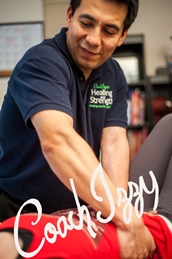Resting After my Injury ... Ugh!

Do as I say, not as I do! is the self-contradicting mantra we often hear from those who mean well but lack the discipline to heed their own advice.
Experience has shown me that, more often than not, this is done unintentionally and we happily dispense with wise words until we’re called front and center and have to face the difficulties ourselves.
In my pain therapy practice, I have the privilege of working with folks from all walks of life, including a significant number of exercise junkies. The sort of people for whom the idea of skipping one day–or many–of exercise fills them with anxiety, and for whom engaging in vigorous exercise is the hallmark of a great day.
I know because I’m one of them. We, exercise junkies, understand each other at a deep level as we all know the value of exercise in our lives. But as a pain therapist, I also understand what the body needs in order to repair and heal. I know challenging the body too soon is futile and may not only perpetuate the offending condition, it could also exacerbate it. Thus, I have no hesitation in reminding my fellow exercise-addicts of the importance of letting their bodies repair without rushing if they’re to resume their physical activities.
I see the frustration in their eyes and their agitation at my words. But I don’t budge. I hold my ground steady, and occasionally with a hint of smugness. After all, they should know better and have the discipline to let their bodies recover.
Pfft! Easier said than done!
It was last week that I was confronted by my own advice as an injury caught me off guard while training. I wish I could say it happened while setting a personal best in the clean or the squat, that would at least give me a good story. But it wasn’t like that. I strained my back while performing the most mundane of woodchoppers in a piece of equipment I believe to have one of the most forgiving mechanical force profiles.
The pain was paralyzing and immediate. I could barely move my left leg and breathing proved painful. I got dizzy and felt nauseated. I knew this was what I refer to as the straw. I had been playing and pushing hard for the past few weeks and didn’t feel like slowing down. The woodchoppers were only the proverbial straw that broke the camel’s back.
That’s what happens when you’re an exercise junkie. My body was not properly recovered and I neglected my hydration that morning. It’s only light woodchoppers, what could possible go wrong? was my last thought before my body manifested its discontent. My words replayed in my head as I felt stupid and embarrassed. I scanned my body and started treating myself via Strain-Counterstrain techniques. I started breathing better but I still was in a great deal of pain.
It was time to seek assistance. I contacted my friend, teacher, and therapist Dhyana Moyer whose skilled hands and extensive knowledge of Strain-Counterstrain has gotten me out of ugly spots the times I get a tad too competitive. She was gracious enough to see me immediately during her time off.
In that aspect, I followed my own advice. I always instruct all my clients that the best time to see me after an injury is immediately after it happens. Provided that there’s nothing broken or bleeding, Strain-Counterstrain can reduce the healing time frame from weeks to days.
Dhyana spent an intense hour releasing the visceral fascia as I pondered how much time off I’d need to take. I found a great deal of relief but moving was still painful. Tying my shoes was excruciating but I resolved to see the rest of my appointments for the day. I hoped to see my clients and then go home and rest. Many times a good night sleep is what makes the difference after a good therapy session.
Working proved difficult, even with the relatively gentle techniques of Strain-Counterstrain. After my second session, I knew I was contradicting my own advice about healing and it was time to concede. With much embarrassment, I picked up the phone and started rescheduling my appointments for the rest of the day and the next two.
